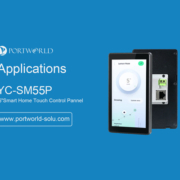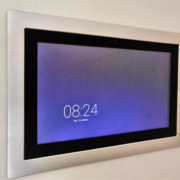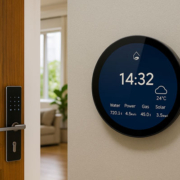How Do Smart Home Control Panels Work?
Smart home control panels are the central hubs of any home automation system, allowing users to manage and control various smart devices such as lighting, security systems, thermostats, entertainment, and more. These devices work by integrating different smart technologies and enabling seamless communication between all connected devices through a single, user-friendly interface. By doing so, they provide an intuitive way to monitor, control, and automate systems within your home or building.
In this article, we’ll break down how smart home control panels work, the key components, and how they enable seamless home automation.
Key Components of a Smart Home Control Panel
1. Touchscreen Interface
Most smart home control panels feature a touchscreen interface, which allows users to interact with the system using simple gestures like tapping, swiping, and zooming. The touchscreen acts as the primary point of interaction, offering a graphical user interface (GUI) that displays various system controls, statuses, and feedback.
2. Operating System (OS)
Smart home control panels operate on an operating system (OS), which is typically Android, Linux (Ubuntu/Debian), or Windows. The OS allows the panel to run applications, integrate with various smart devices, and provide a stable environment for controlling the entire smart home system. The choice of OS depends on the features and compatibility needs of the home automation system.
3. Connectivity Options
Connectivity is essential for smart home control panels to communicate with all the devices in your home. Most smart home panels offer a variety of connectivity options:
- Wi-Fi: Allows the panel to connect wirelessly to your home network and control connected devices.
- Ethernet (PoE): Power over Ethernet (PoE) enables the panel to receive power and data through a single cable, reducing the need for separate power adapters.
- Bluetooth: Enables direct communication with Bluetooth-enabled devices such as locks, speakers, or thermostats.
- Zigbee: A low-power, wireless communication protocol used to connect various smart home devices, including lights, locks, and sensors.
- RS485/RS232: These ports are often used for industrial control or legacy devices that require wired connections.
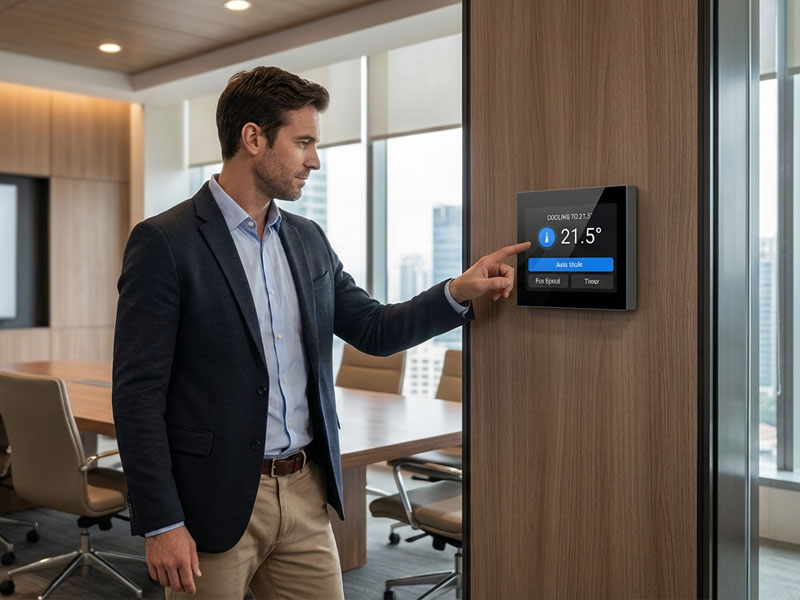
smart control panel manufacturer
4. Processor and Memory
The performance of a smart home control panel relies heavily on its processor and memory. A quad-core processor (like the RK3568 in Portworld’s panels) ensures the panel can handle multiple tasks simultaneously without lag or slowdown. Additionally, sufficient RAM and storage are essential for the smooth running of apps, real-time data display, and seamless integration with smart devices.
5. Smart Device Integration
Smart home control panels are designed to integrate with various smart devices, allowing users to control lighting, climate, security, and more from a single interface. These devices use different communication protocols to talk to the control panel, such as Z-Wave, Zigbee, Wi-Fi, or Bluetooth. Once integrated, users can manage these devices individually or create automation scenarios.
For instance, users might set up automation rules where the thermostat adjusts based on the time of day or when they leave the house. Similarly, lights could turn on or off automatically when entering or leaving a room.
How Smart Home Control Panels Work
1. Centralized Control
Smart home control panels function as the brain of your home automation system. By connecting to various smart devices through Wi-Fi, Bluetooth, Zigbee, or other communication methods, the control panel acts as a centralized hub where all devices can be monitored and controlled. Whether it’s adjusting the lighting in a room, changing the temperature, or locking the doors, the control panel allows you to manage all devices from one central point.
2. User Interaction
Once you power on your smart home panel, you’ll typically see a user-friendly dashboard that gives you a snapshot of your home’s systems. From here, you can interact with the smart devices in your home via touch gestures:
- Touchscreen controls: You can tap to turn lights on or off, adjust thermostat settings, or lock doors.
- Slider controls: For more precise adjustments, like setting the brightness of lights or controlling the temperature of your HVAC system.
- Voice integration: Some smart home panels also support voice control (via integrations with Google Assistant, Amazon Alexa, or Siri) for hands-free operation. This can be a convenient way to adjust settings or activate scenes without having to touch the screen.
3. Automation and Scheduling
Many smart home panels allow you to create automation rules or schedules to manage devices based on specific conditions. For example:
- Lighting automation: You can set lights to turn on at sunset or automatically turn off when you leave the house.
- Climate control: The panel could adjust the thermostat based on your daily routines or detect when you’re home and adjust the temperature for comfort.
- Security systems: Automating your security system can include scheduling door locks to engage at night or activating alarms when you leave the house.
These automation scenarios reduce the need for manual control and provide a seamless, efficient way to manage your home’s systems.
4. Monitoring and Alerts
Smart home control panels also serve as a monitoring dashboard, giving you real-time updates on the status of devices in your home. Whether it’s a security camera, door lock, or smoke detector, the control panel will display the current status of each device and provide alerts if there’s an issue:
- Security alerts: For example, if a door or window is left open or if the camera detects movement, you’ll receive a notification.
- Energy monitoring: Many smart home panels include energy monitoring features, where you can track how much power your devices are consuming and optimize settings to save energy.
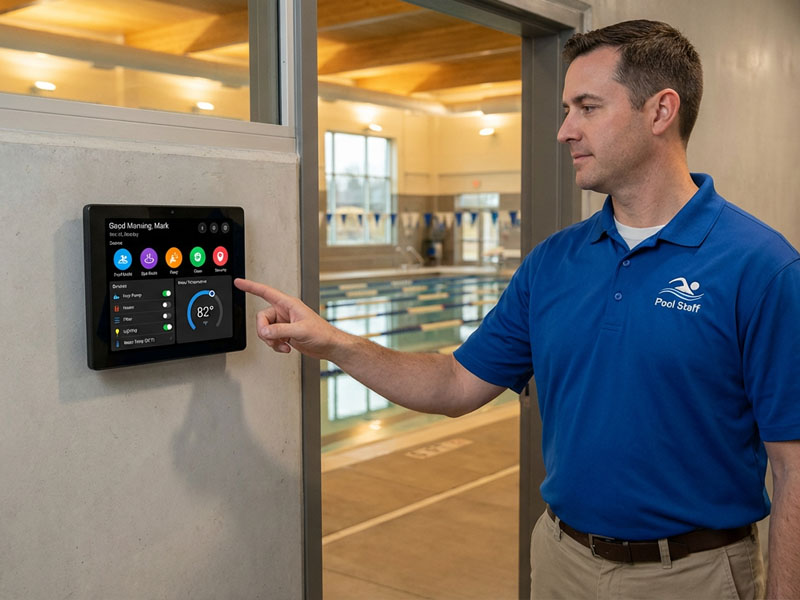
4 inch smart control panel
5. Remote Control
One of the standout features of a smart home control panel is the ability to control your home’s devices remotely. If you’re away from home, you can use the companion app or cloud services to access your control panel from your smartphone or tablet. Whether you need to adjust the thermostat, turn on the lights, or check the security cameras, the ability to control your home remotely offers a high level of convenience and peace of mind.
Portworld’s Smart Home Control Panel Solutions
Portworld provides a wide range of smart home control panels designed to meet the needs of modern smart homes and commercial buildings. These include:
1. YC-SM41P – 4-Inch Smart Home Touch Control Panel
-
Features: Compact, 4-inch touchscreen with multi-touch support, runs on Android 11/13 or Linux Debian 11, with Wi-Fi, Bluetooth 4.0, and PoE support. Ideal for residential and small-scale commercial automation.
2. YC-SM1011 – 10.1-Inch Smart Home Touch Control Panel
-
Features: Larger 10.1-inch display, supports multi-touch gestures, integrates with Zigbee and other smart devices, and is compatible with Android/Linux OS. Designed for larger homes or office environments.
3. YC-P5 – 5-Inch Smart Touch Control Panel
-
Features: A sleek 5-inch panel with Wi-Fi, Ethernet PoE, and Bluetooth connectivity. It supports custom branding and offers flexible installation options for smart home systems, hotels, and commercial spaces.
4. Customization Services
Portworld offers comprehensive OEM/ODM solutions for hardware and software customization, ensuring that the smart home panels meet specific needs for design, functionality, and device integration.
Smart home control panels work by integrating all the connected devices in your home, allowing for centralized control via a user-friendly touchscreen interface. With advanced features like multi-touch control, automation, remote access, and energy monitoring, these panels provide a seamless, efficient, and convenient way to manage your home. Portworld offers a range of customizable smart home control panels to suit different needs, from small homes to large commercial spaces, helping you bring your smart home vision to life.

